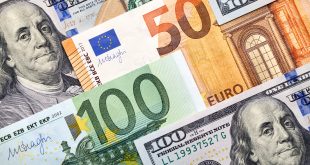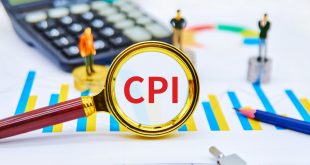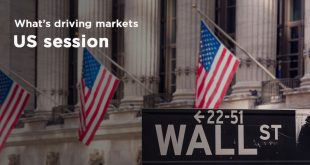The main indices of the New York Stock Exchange (NYSE) showed a mixed performance on Tuesday, amid concerns among Wall Street investors about the prospects of higher interest rates.
The tech sector continued with a downward trend after the U.S. Treasury Secretary suggested raising interest rates might be needed to avoid the economy overheating.
Today, the trading volume reached its highest level in a month at 12.21 billion shares, according to Reuters.
The Dow Jones Industrial Average recovered from some earlier losses and finished marginally higher, adding 19.8 points, or 0.06%, to close at 34,133.03 points.
The S&P 500 lost 28 points, or 0.67%, finishing at the level of 4,164.66 points.
Meanwhile, the Nasdaq Composite Index led the decline and plunged by 261.62 points, or 1.88%, to end the session at 13,633.50 points.
Earlier today, Yellen suggested that raising interest rates might be necessary in order to avoid the economy overheating amid increased government stimulus spending and investment plans.
“It may be that interest rates will have to rise somewhat to make sure that our economy doesn’t overheat, even though the additional spending is relatively small relative to the size of the economy.”
“It could cause some very modest increases in interest rates to get that reallocation, but these are investments our economy needs to be competitive and to be productive (and) I think that our economy will grow faster because of them,” said the former chair of the Federal Reserve.
Data showed earlier that the U.S. trade deficit surged to a record high in March, on the back of demand recovery that led to a growth in imports.
According to the U.S. Department of Commerce, the trade deficit rose by 5.6% to reach $74.4 billion, as imports leveled up by 6.3% to $274.5 billion.
The U.S. goods imports also surged to a new record high of $234.4 billion, after rising by 7% in March.
Meanwhile, exports rose by 6.6% to $200 billion, with goods Exports increasing by 8.9% to reach $142.9 billion.
In addition, new U.S. factory orders increased in March, also supported by the improving local demand, rising by 1.1% in March, following a 0.5% decline in February. Furthermore, unfilled factory orders also increased by 0.4% after a 0.9% surge in the month before.
Similarly, orders for non-defense capital goods surged by 1.2%, following an increase of 0.9% in February.
The increase in demand is also expected to lead to a rise in inflation, as “it takes awhile for firms to ramp up supply. That does push prices up,” according to President of the Federal Reserve Bank of San Francisco, Mary Daly.
Daly said that a rise in inflation is something good for the American economy. “The same tolerance you have for 1.5% you should have for 2.5%.”
“We are talking about inflation readings of 2.4%, 2.5% and 2.6%. Not 13%.”
“I am in the camp that this is transitory. A little inflation would be for us. We had a decade of strong growth and never reached our target.”
Meanwhile, U.S. Treasury bond yields declined on Tuesday, as the stock market losses led to higher demand for safe-havens.
Return on the benchmark 10-year Treasury bond declined by 1.5 basis points to 1.591%, while the 30-year bond yield fell by 2.3 basis points to 2.264%, and the two-year bond yield remained nearly unchanged at the level of 0.160%.
 Noor Trends News, Technical Analysis, Educational Tools and Recommendations
Noor Trends News, Technical Analysis, Educational Tools and Recommendations





